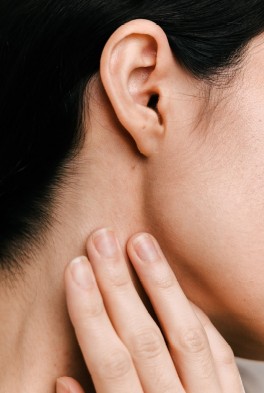Tinnitus, characterized by ringing, buzzing, or other noises in the ears without an external source, can significantly impact quality of life. While there’s no cure for tinnitus, physical therapy offers a holistic approach that integrates mind-body techniques to alleviate symptoms and improve overall well-being. In this blog post, Tony Schuster of Spring Lake explains how relaxation exercises, biofeedback, and cognitive-behavioral therapy (CBT) can be incorporated into physical therapy for tinnitus management, emphasizing their impact on stress reduction and symptom relief.
Understanding Tinnitus and Its Impact
Tinnitus affects millions of people worldwide, often associated with hearing loss, ear injury, or neurological conditions. It can lead to anxiety, depression, and sleep disturbances, amplifying its burden on daily life. Physical therapy provides non-invasive strategies that not only address physical symptoms but also enhance psychological resilience through mind-body techniques.
Relaxation Exercises for Tinnitus Relief
Relaxation techniques are foundational in managing tinnitus-related stress and improving coping mechanisms. Physical therapists often recommend:
Deep Breathing Exercises: Controlled breathing exercises promote relaxation, reduce muscle tension, and lower overall stress levels. Patients learn to focus on slow, deep breaths, which can alleviate the intensity of tinnitus perception.
Progressive Muscle Relaxation (PMR): PMR involves tensing and relaxing different muscle groups systematically. This technique helps patients become more aware of muscle tension patterns and learn to release tension, reducing the physiological response to tinnitus.
Guided Imagery: Visualization techniques guide patients to imagine peaceful scenes or pleasant experiences, diverting attention away from tinnitus sounds and promoting relaxation responses.
Biofeedback
Biofeedback is a therapeutic technique that helps individuals gain control over physiological processes through real-time monitoring and feedback. In tinnitus management, biofeedback focuses on:
Muscle Tension Reduction: Sensors monitor muscle tension, particularly in the neck, shoulders, and jaw, which are commonly associated with tinnitus exacerbation. Feedback helps patients learn to relax these muscles consciously, reducing the impact of muscle tension on tinnitus perception.
Stress Response Modification: By monitoring skin temperature, heart rate variability, or galvanic skin response, biofeedback teaches patients to recognize and control stress responses that may worsen tinnitus symptoms.
Neurofeedback: Advanced forms of biofeedback focus on brainwave activity. Neurofeedback training aims to regulate brainwave patterns associated with tinnitus perception, potentially reducing the perception and distress caused by tinnitus sounds.
Cognitive-Behavioral Therapy (CBT) for Tinnitus
CBT is a psychotherapeutic approach that addresses negative thought patterns and behaviors associated with chronic conditions like tinnitus. In physical therapy settings, CBT techniques for tinnitus management include:

Education and Counseling: Providing accurate information about tinnitus reduces anxiety and misconceptions. Counseling sessions help patients develop coping strategies and realistic expectations about symptom management.
Cognitive Restructuring: Identifying and challenging negative thoughts related to tinnitus (e.g., catastrophizing or hopelessness) helps patients replace them with more balanced and adaptive thoughts. This approach reduces emotional distress and improves overall well-being.
Behavioral Techniques: Encouraging positive lifestyle changes, such as improving sleep hygiene, maintaining regular physical activity, and managing stress effectively, supports tinnitus management by enhancing resilience and reducing symptom exacerbation.
Integrating Mind-Body Techniques into Physical Therapy Sessions
Physical therapists tailor treatment plans to individual needs, integrating mind-body techniques seamlessly into rehabilitation programs:
Personalized Assessment: Assessing each patient’s unique tinnitus symptoms, stress levels, and lifestyle factors informs the selection of appropriate mind-body interventions.
Skill Building and Practice: Patients receive guidance on practicing relaxation exercises, using biofeedback devices, or applying CBT techniques outside therapy sessions to foster self-management and long-term symptom relief.
Monitoring Progress: Regular monitoring and adjustment of treatment strategies ensure that mind-body techniques effectively complement other physical therapy interventions, such as manual therapy or vestibular rehabilitation.
Conclusion
Mind-body techniques play a pivotal role in physical therapy for tinnitus management, offering holistic approaches that enhance stress reduction and alleviate symptoms. By integrating relaxation exercises, biofeedback, and cognitive-behavioral therapy into treatment plans, physical therapists empower patients to regain control over their well-being and improve their quality of life despite tinnitus challenges. Understanding these techniques equips individuals with valuable tools to manage tinnitus symptoms effectively and foster a sense of resilience in their daily lives.
